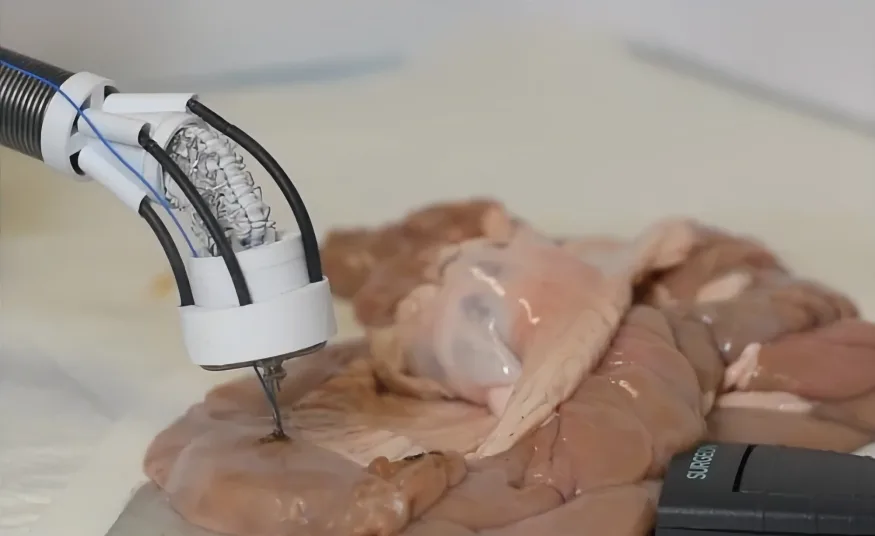Exciting advancements in the field of bioprinting have led researchers at the University of New South Wales, Sydney, to develop a flexible 3D bio-printer that has the potential to revolutionize the medical industry. The F3DB, as it’s called, can layer organic material directly onto organs or tissue with minimal invasiveness, potentially helping to avoid major surgeries or the removal of organs.

The F3DB has a soft robotic arm that can assemble biomaterials with living cells onto damaged internal organs or tissues. The printer’s snake-like flexible body would enter the body through the mouth or anus, with a pilot or surgeon guiding it towards the affected area using hand gestures. The printer also features jets that can spray water onto the target area, and its printing nozzle can double as an electric scalpel. The team hopes that this could someday become an all-in-one tool for minimally invasive operations.
The F3DB’s robotic arm uses three soft-fabric-bellow actuators using a hydraulic system composed of “DC-motor-driven syringes that pump water to the actuators,” as summarized by IEEE Spectrum. Its arm and flexible printing head can each move in three degrees of freedom (DOFs), similar to desktop 3D printers. Additionally, it includes a flexible miniature camera to let the operator view the task in real-time.
The research team has run its first lab tests on the device using non-biomaterials such as chocolate and liquid silicone. They later tested it on a pig’s kidney before moving onto biomaterials printed onto a glass surface in an artificial colon. According to Thanh Nho Do, co-leader of the team and Senior Lecturer at UNSW’s Graduate School of Biomedical Engineering, “We saw the cells grow every day and increase by four times on day seven, the last day of the experiment. The results show the F3DB has strong potential to be developed into an all-in-one endoscopic tool for endoscopic submucosal dissection procedures.”
While this breakthrough technology sounds like it’s straight out of a sci-fi movie, the team warns that it’s still five to seven years away from human testing. Nonetheless, the F3DB has the potential to significantly improve the accuracy and efficacy of medical procedures, making a positive impact on countless lives.
RELATED:
- YHE’s BP Doctor MED emerges as the first smartwatch with medical-grade BP monitor
- Elyarchi Debuts the Amabox 3D Printer for Geeks
- Best Ergonomic Mouse 2023: Logitech, Microsoft & More
(Via)



